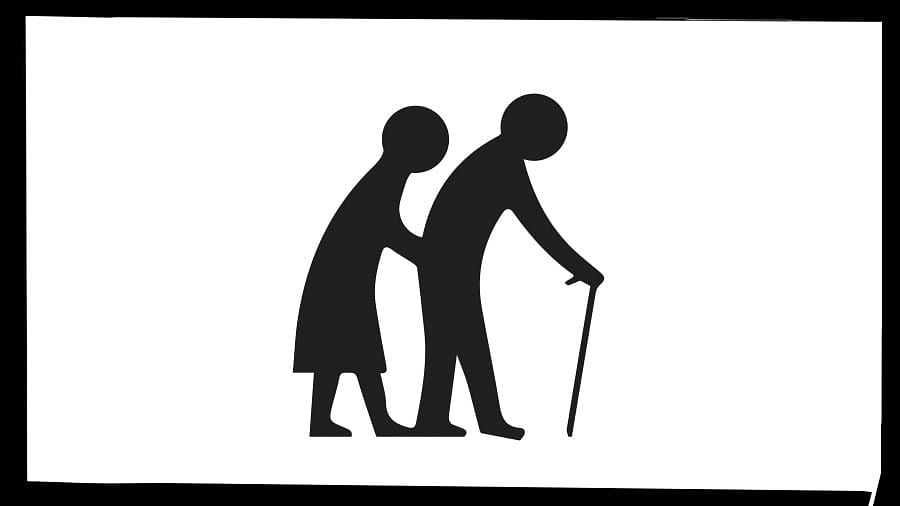
Government schemes, when they focus exclusively on target beneficiary groups, can also turn counterproductive. They not only stop short of the proposed benefits to those who are covered but also exclude many deserving from the schemes’ purview. This makes public-funded universal health and education programmes all the more critical.
Successive governments have largely been in line with this vision and worked towards public-funded health insurance and similar schemes, notwithstanding the many incongruities in their formulation.
The recent extension of the Ayushman Bharat Pradhan Mantri Jan Arogya Yojana (AB PM-JAY) coverage to senior citizens aged above 70 years appears to be aligned with this idea of universal health coverage. However, beyond the formal announcements regarding the scope of this extension, there are calls to address existing glitches in the system.
PM-JAY was launched in 2018 to benefit the bottom 40% of the Indian poor and vulnerable population comprising 12 crore households. A key issue with the scheme has been the exclusion of outpatient care.
While the government gloats over its success, as seen in its coverage of assistance with 8.2 crore hospitalisations reported since its inception till November 1, there are concerns over inadequate coverage and a persisting indifference of many empanelled hospitals to the scheme.
Irrespective of the claims, PM-JAY has not brought any significant change to our poor, rather sick, healthcare system. Health services have become increasingly commercial and the cost burden on people has been on the rise. As per a NITI Aayog report, 7% of the population – that is about 10 crore people – fall below the poverty line every year, due to high out-of-pocket health expenditure.
The new, extended coverage is unlikely to make things significantly better for senior citizens. It considers those aged above 70 as seniors whereas 60 is normally taken as the benchmark; the Senior Citizens Act 2007 defines a senior citizen as one who has attained 60 years of age or above.
Some state governments give old age destitute pensions even to people below 60. The demand for inclusion of people aged 60 and above in this health scheme has been gaining credence. Yes, this will involve additional expenditure.
The Government of India has initially allocated (towards its 60% share) Rs 3,437 crore while states are expected to contribute 40% of the total cost. The number of households is estimated to be 4.5 crore and the number of 70-plus beneficiaries to be six crore.
Based on available population datasets, the additional coverage (of 8.9 crore people aged between 70 and 60) can involve an additional expenditure of about Rs 5,100 crore for the rest of the financial year and the next year.
That would not be a huge burden on the central government but would provide immense relief to the included sections of the senior citizen population.
The expenditure is not going to be substantial, given the fact that a significant number of eligible people are not availing the benefits partly due to a lack of awareness about the scheme. Also, there are economically stable beneficiaries who don’t require these benefits and there are those who, while eligible, are unlikely to utilise the scheme due to many inadequacies and resistance from the care providers.
Complex admission procedures
The second demand relates to a major challenge the scheme’s beneficiaries face: many empanelled hospitals are turning down eligible patients. Their agony is not difficult to understand when the hospitals refuse admission during an emergency. This may lead to delayed or lack of treatment, resulting in further health deterioration and resultant complications, at times fatal.
The demand is to make it mandatory for the listed hospitals to treat the eligible patients, without giving them scope to refuse admission based on issues such as non-reimbursement of dues from the government.
The extensive, unnecessary paperwork involved in availing health cards, and in furnishing evidence when senior citizens need immediate medical attention is a problem that needs immediate resolution. A new system needs to be established with the Aadhaar card – which validates the age and eligibility of the patient – as the sole document required for admission. Once the Aadhaar is linked to the senior citizens’ health scheme, other details such as previous hospital visits and the benefits already drawn can be verified.
The government also needs to consider a review of two conditions in the scheme. One, that treatment is limited to the extent of Rs 5 lakh per annum per family. If there are more senior citizens aged above 70 years in one family (the government indicates this when it says the scheme will benefit 4.5 crore families and six crore individuals), the allocation can prove inadequate.
Secondly, not every ailment is treated under the scheme. There is a stipulated list of diseases and, of course, the government has promised to expand it to cover geriatric treatments because of the introduction of the senior citizens’ health scheme. The scheme should be revamped in ways to cover all ailments and healthcare needs of senior citizens.
Not only should the government overhaul the senior citizens PM-JAY, but it should introspect on its duty as a welfare state to provide universal healthcare to all citizens of the country.
The protection of life and personal liberty guaranteed under Article 21 of the Constitution cannot be ignored by the government. It is the people’s right to demand quality healthcare for all and the government must respond holistically, instead of providing the benefits to a limited number of people.
(The writer is a development economist and commentator on economic and social affairs)